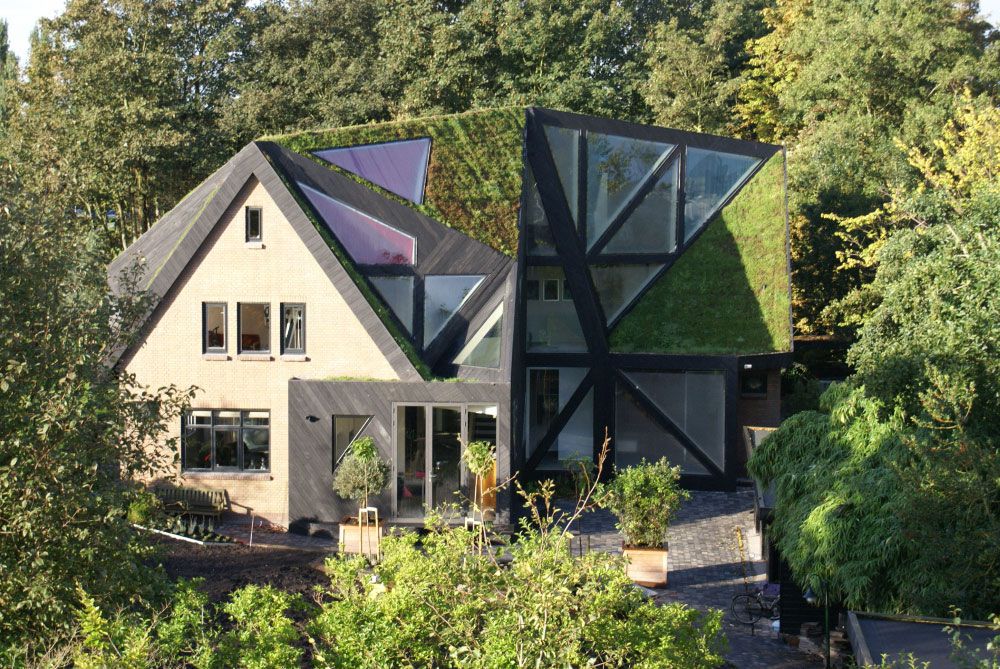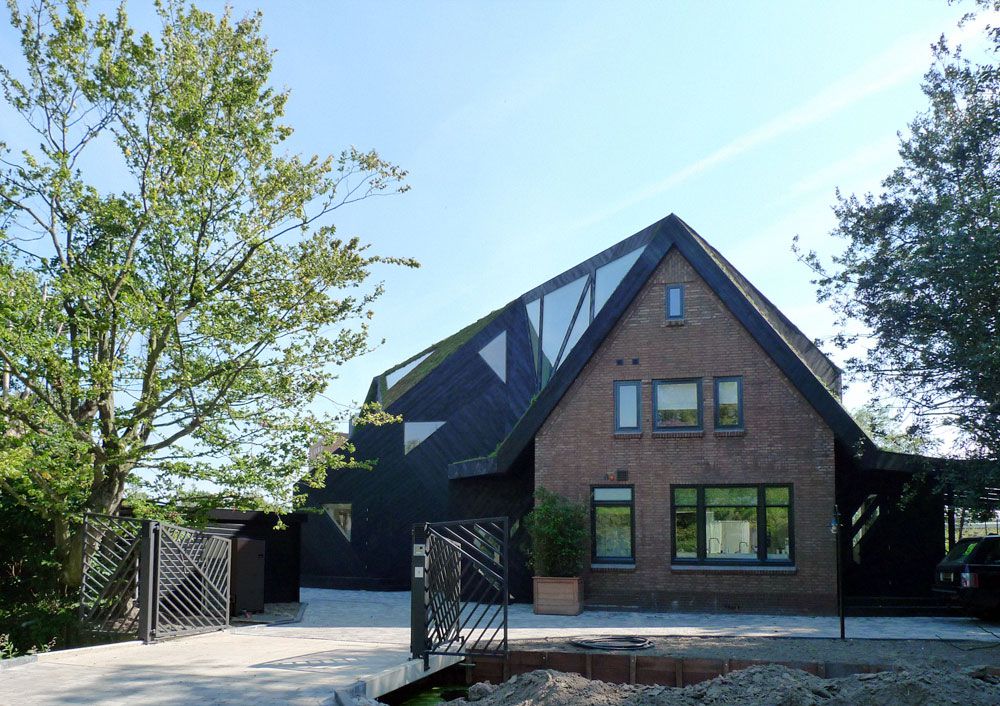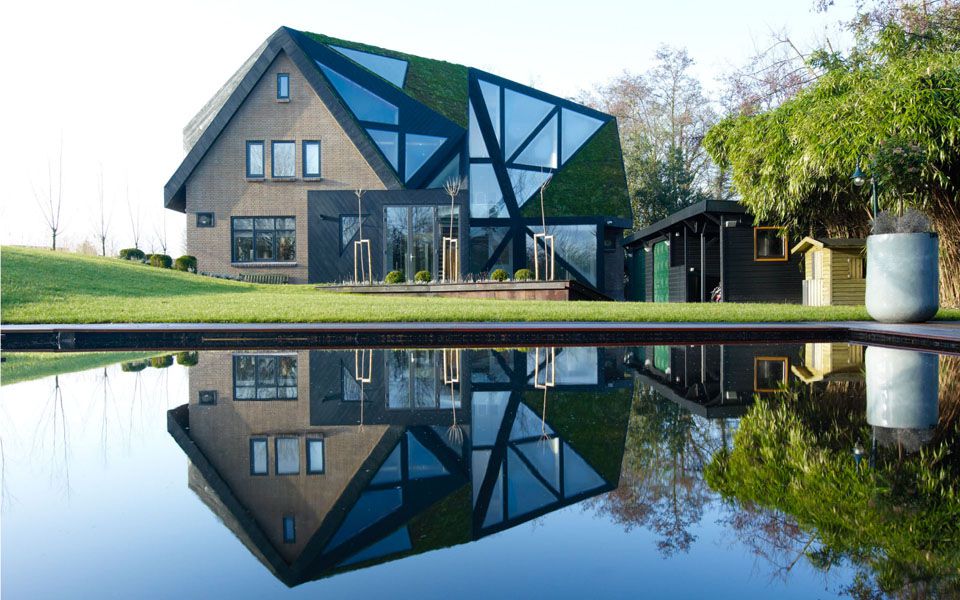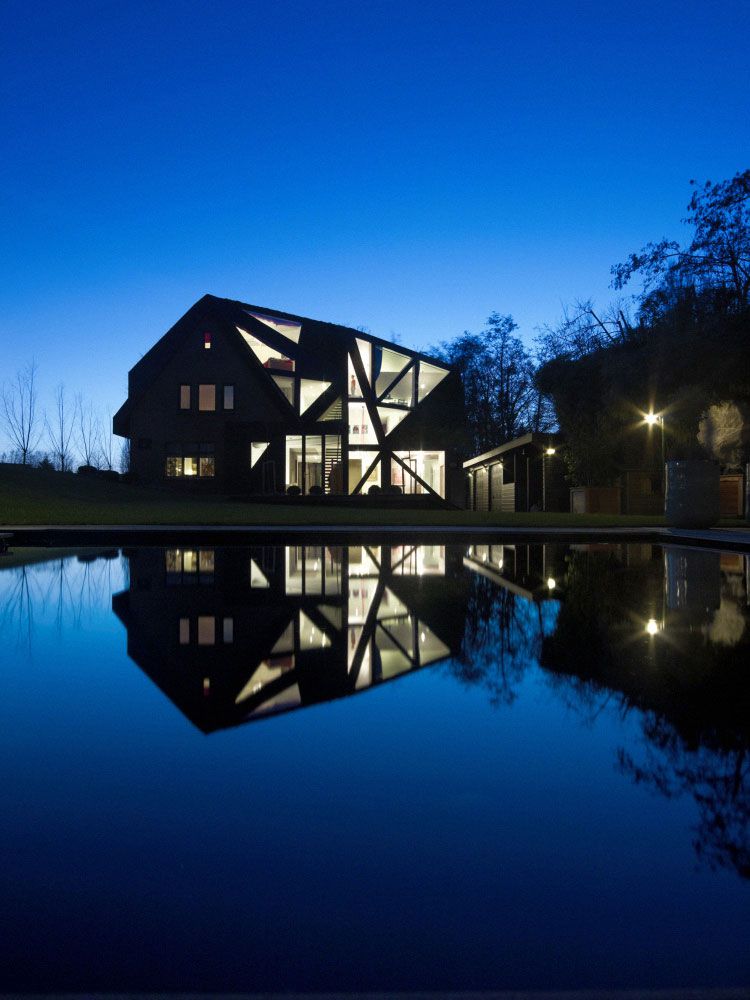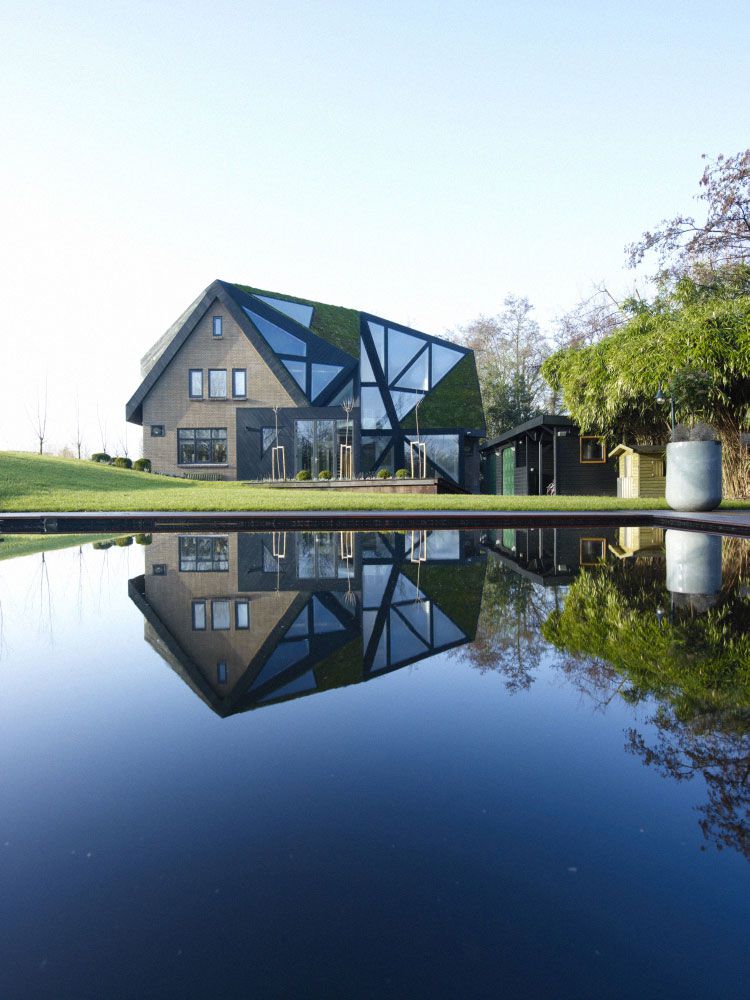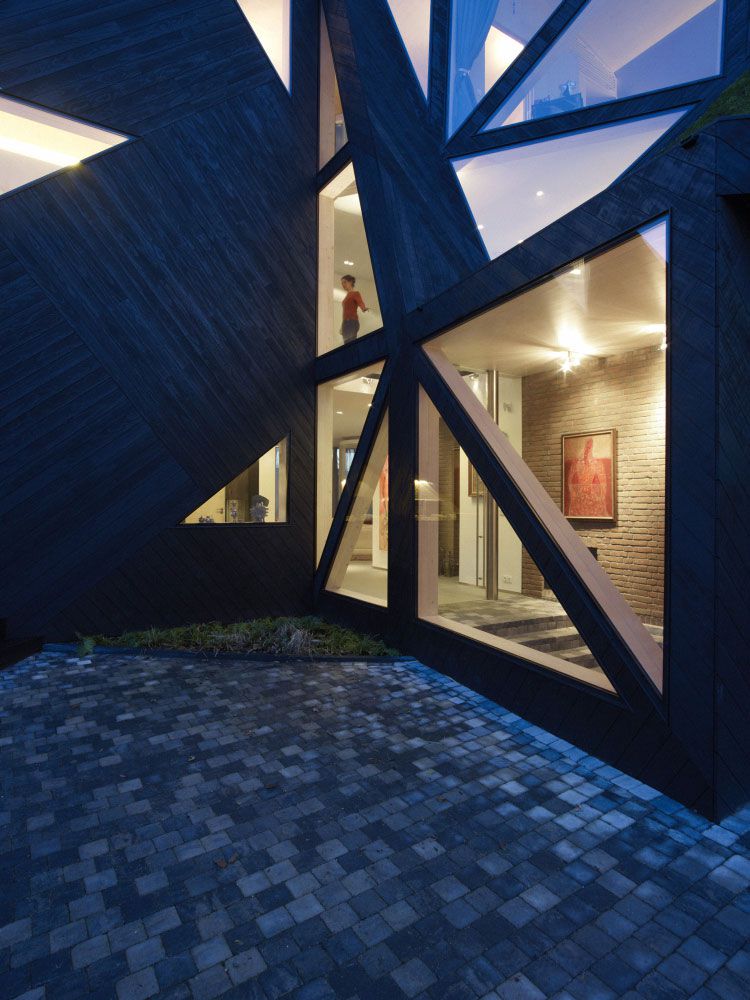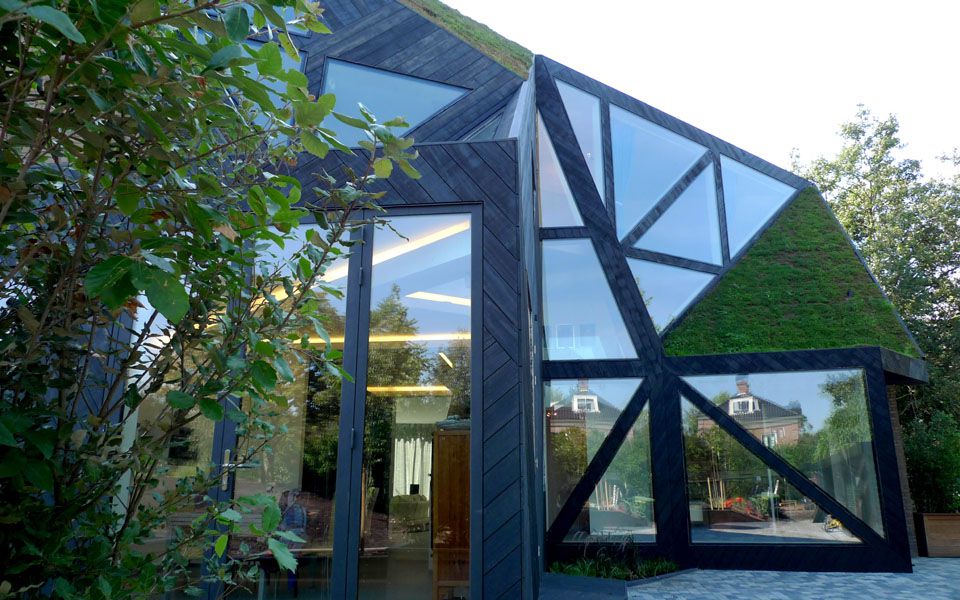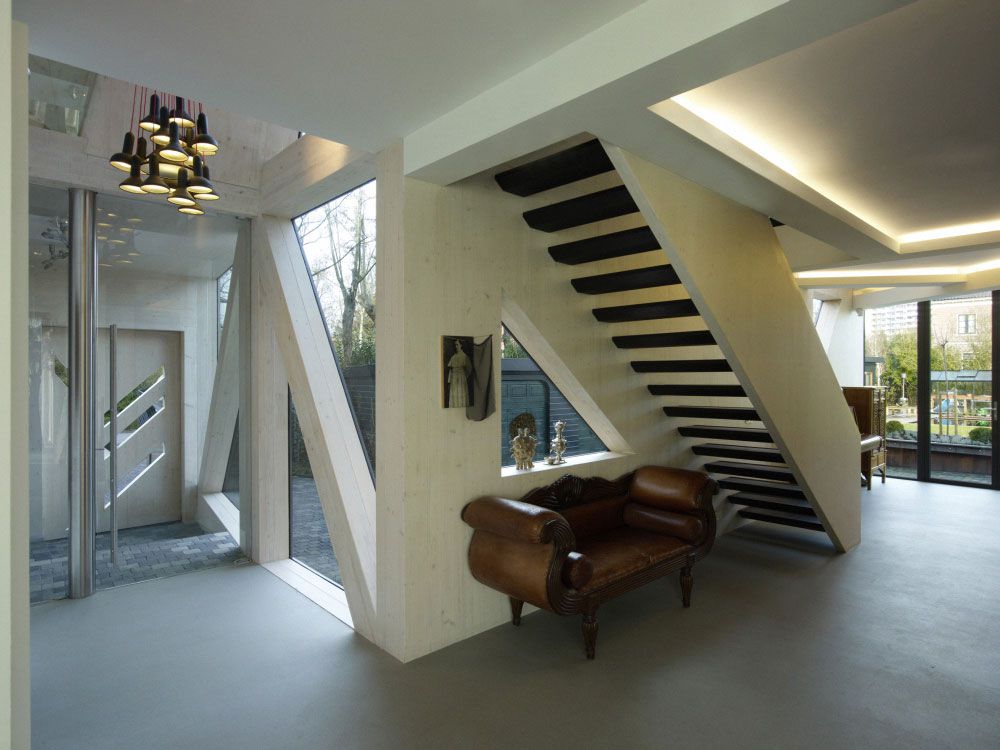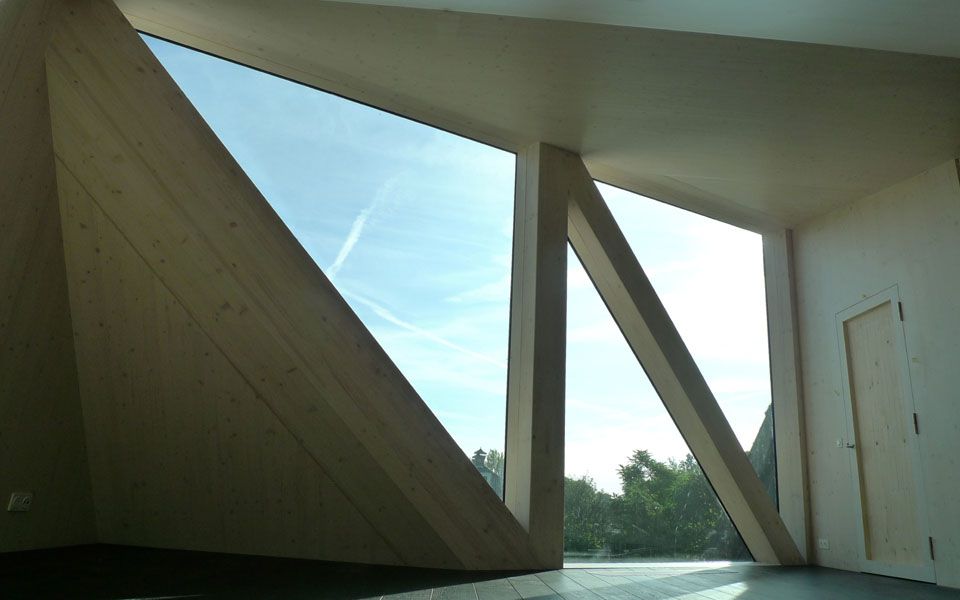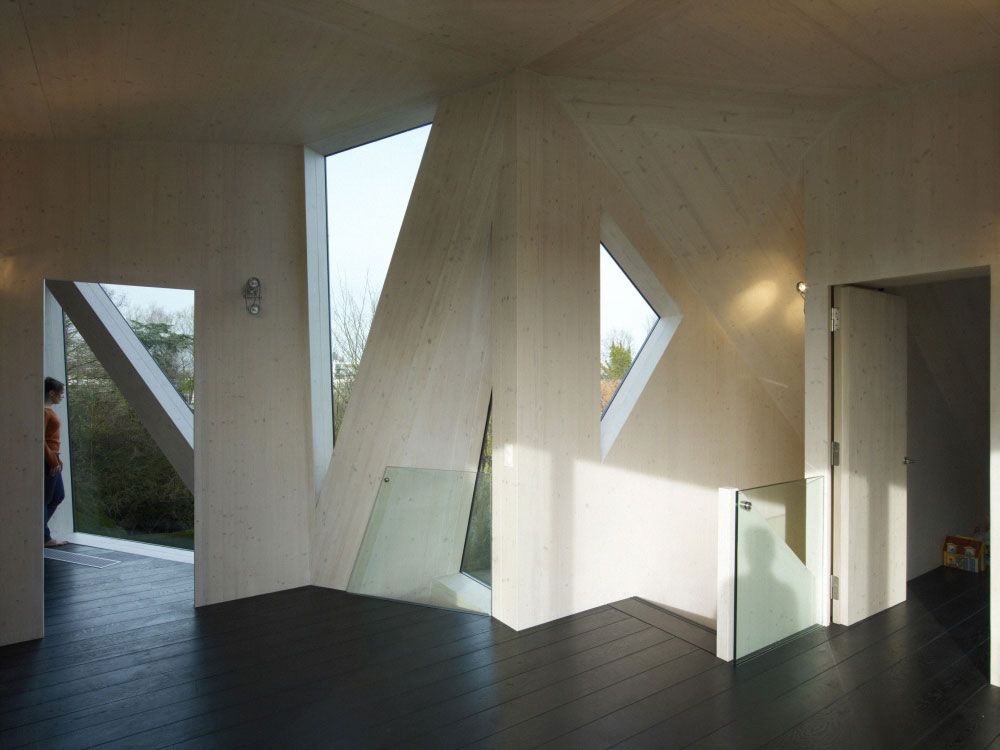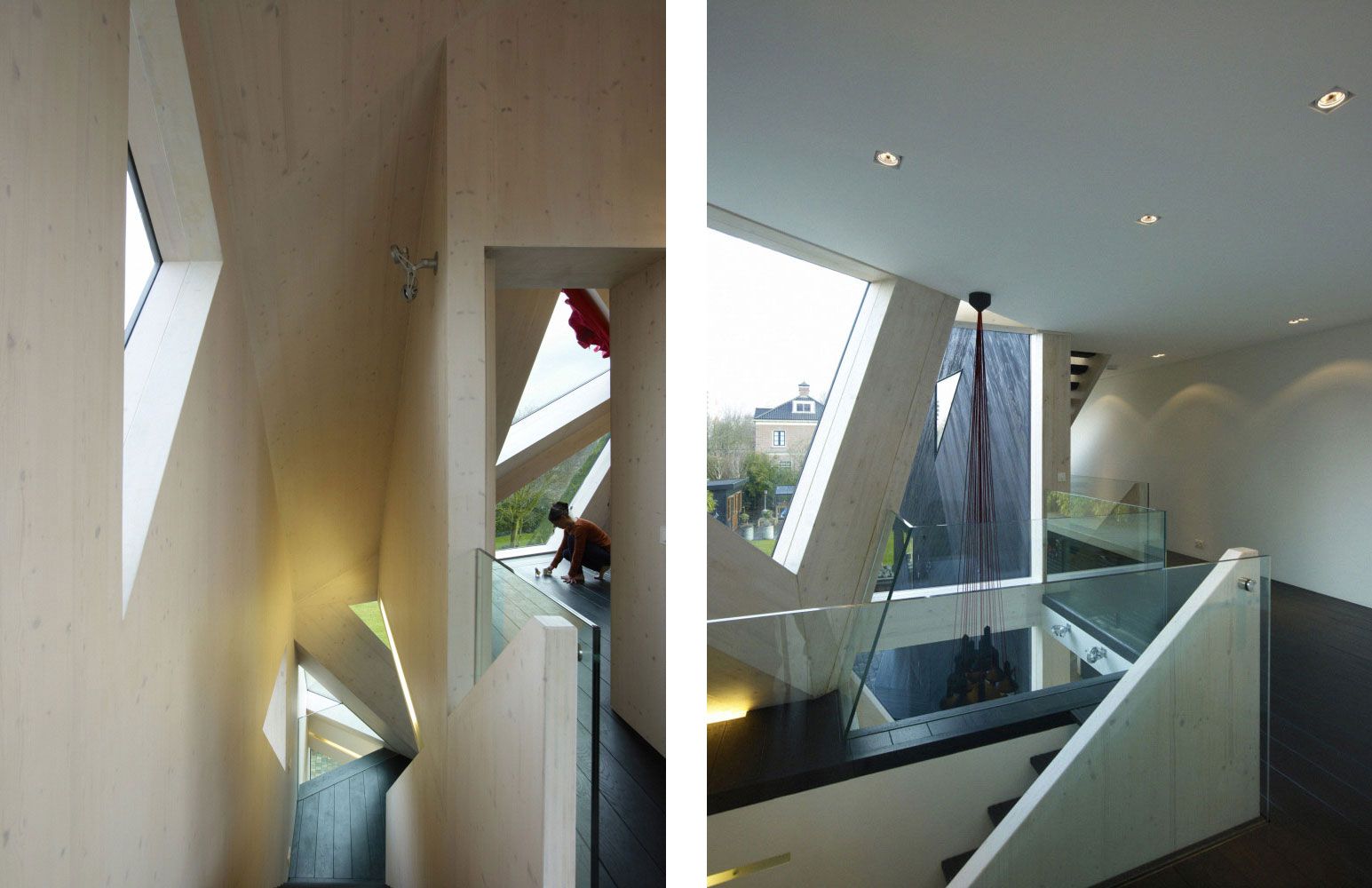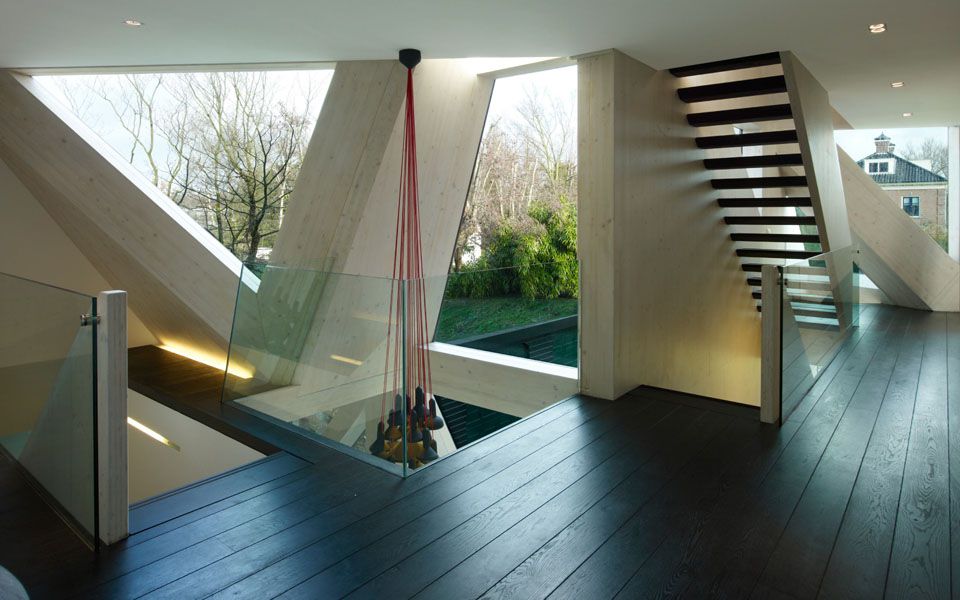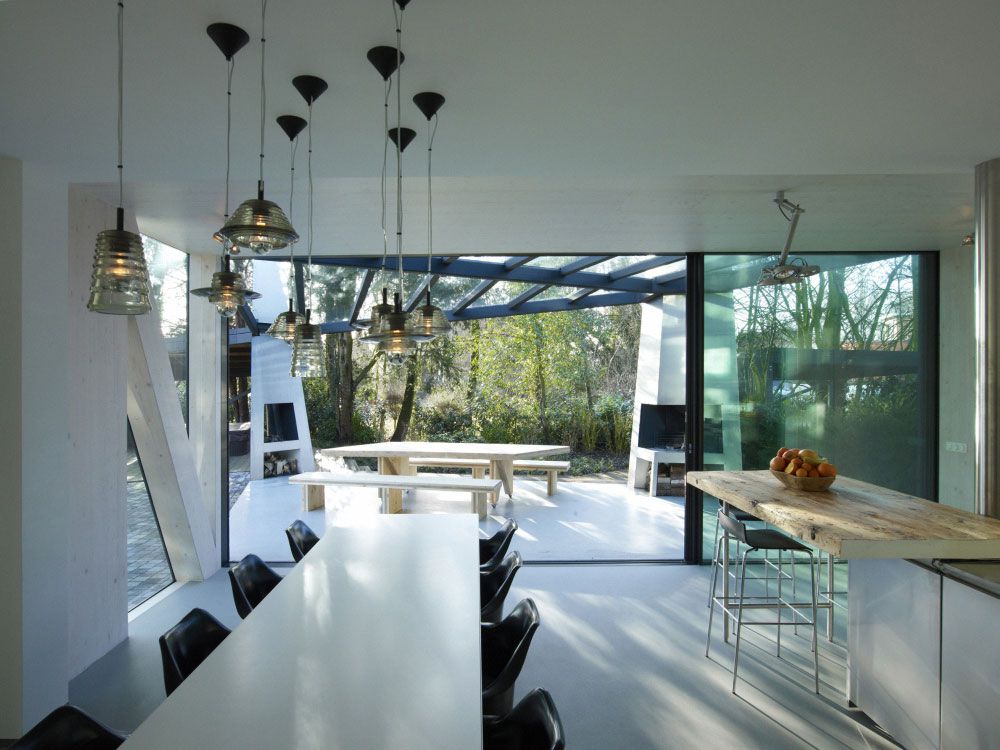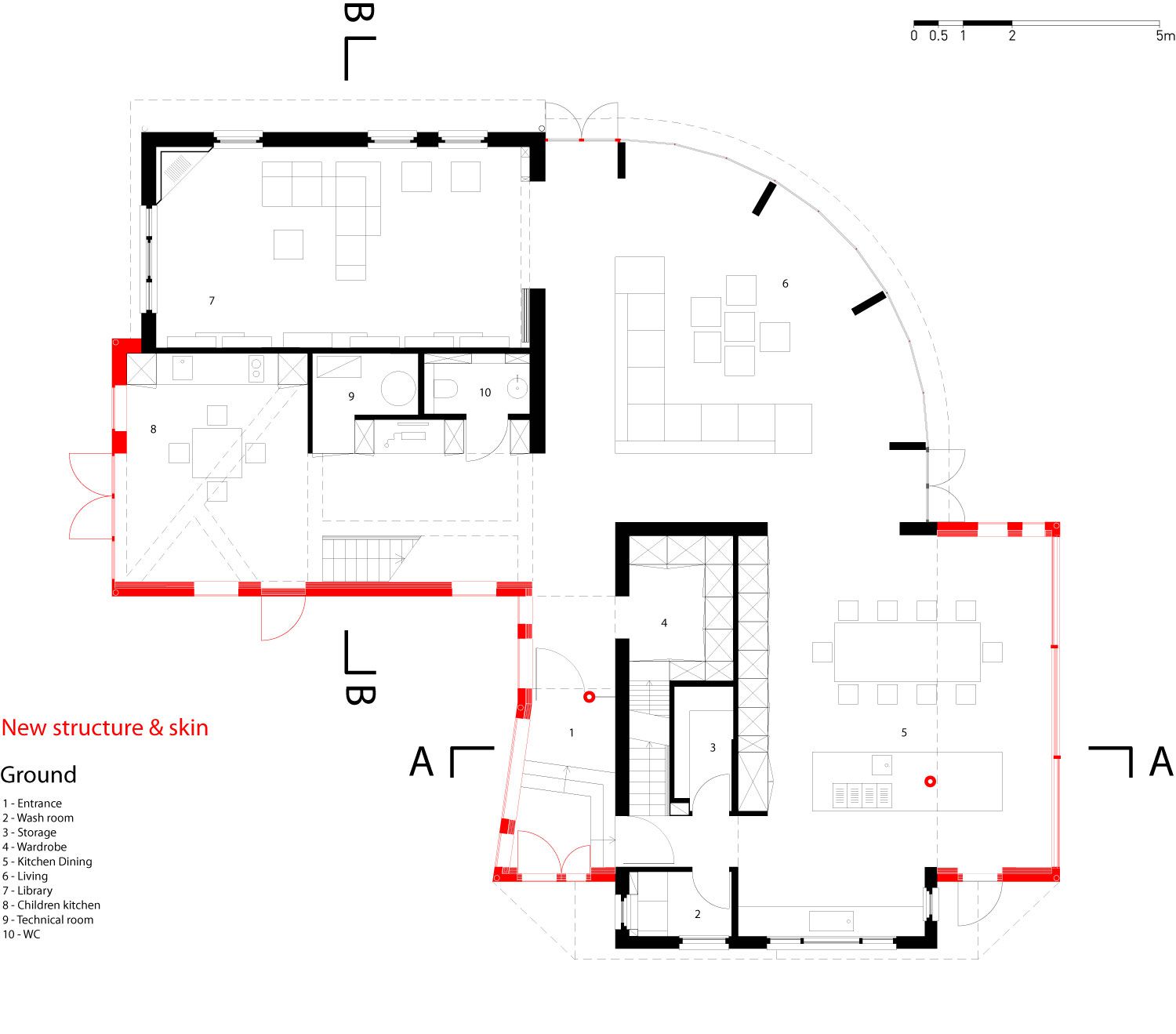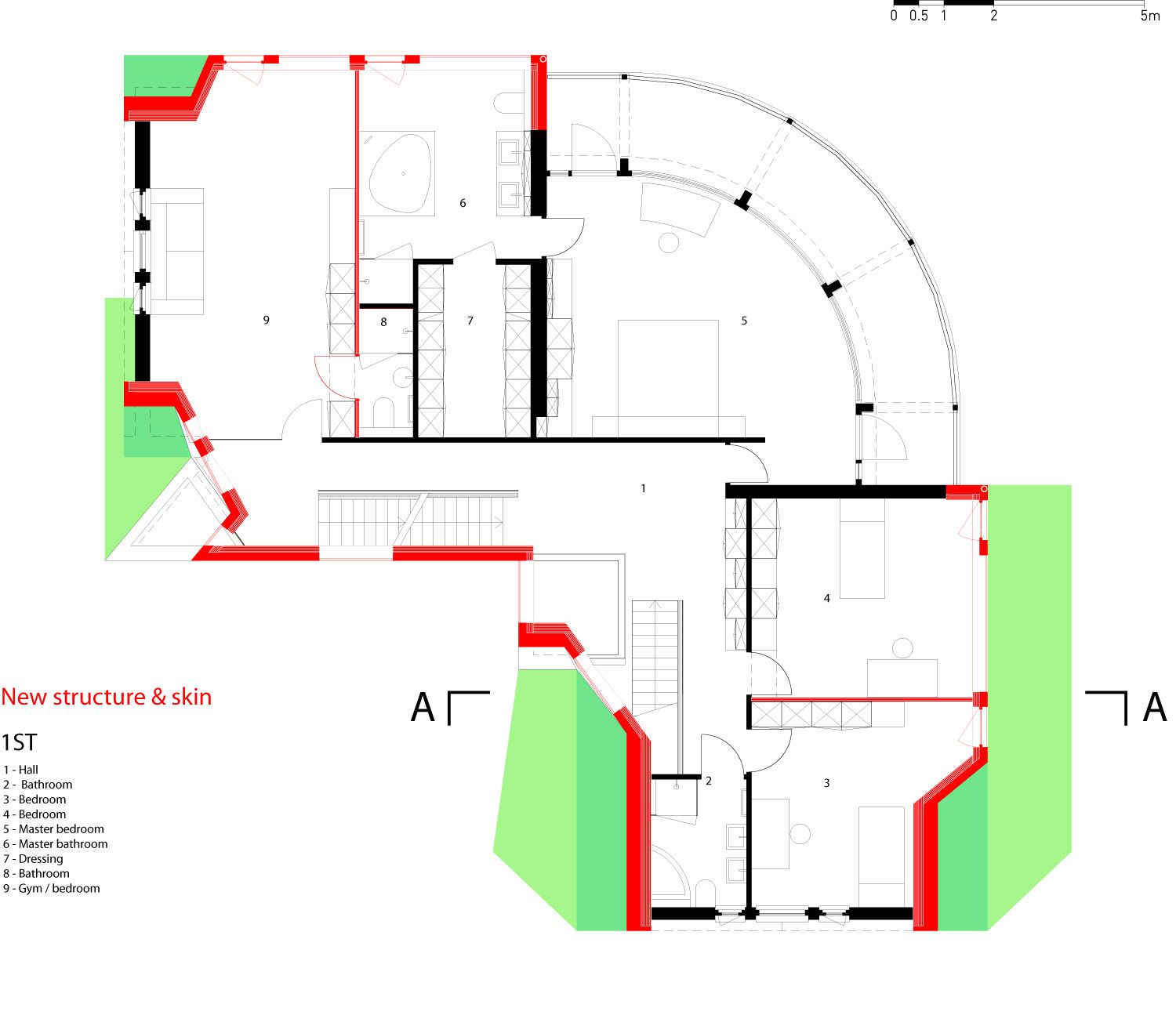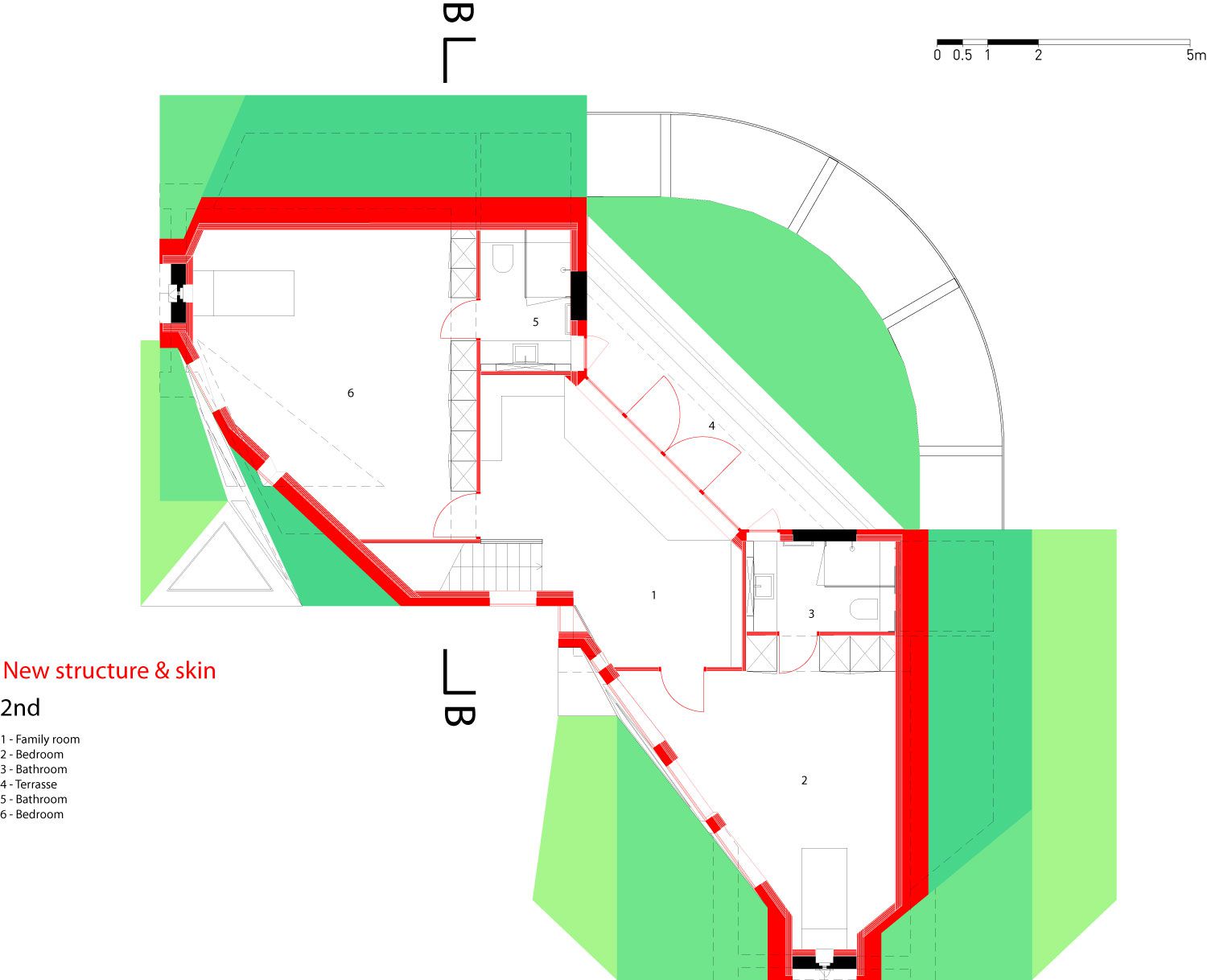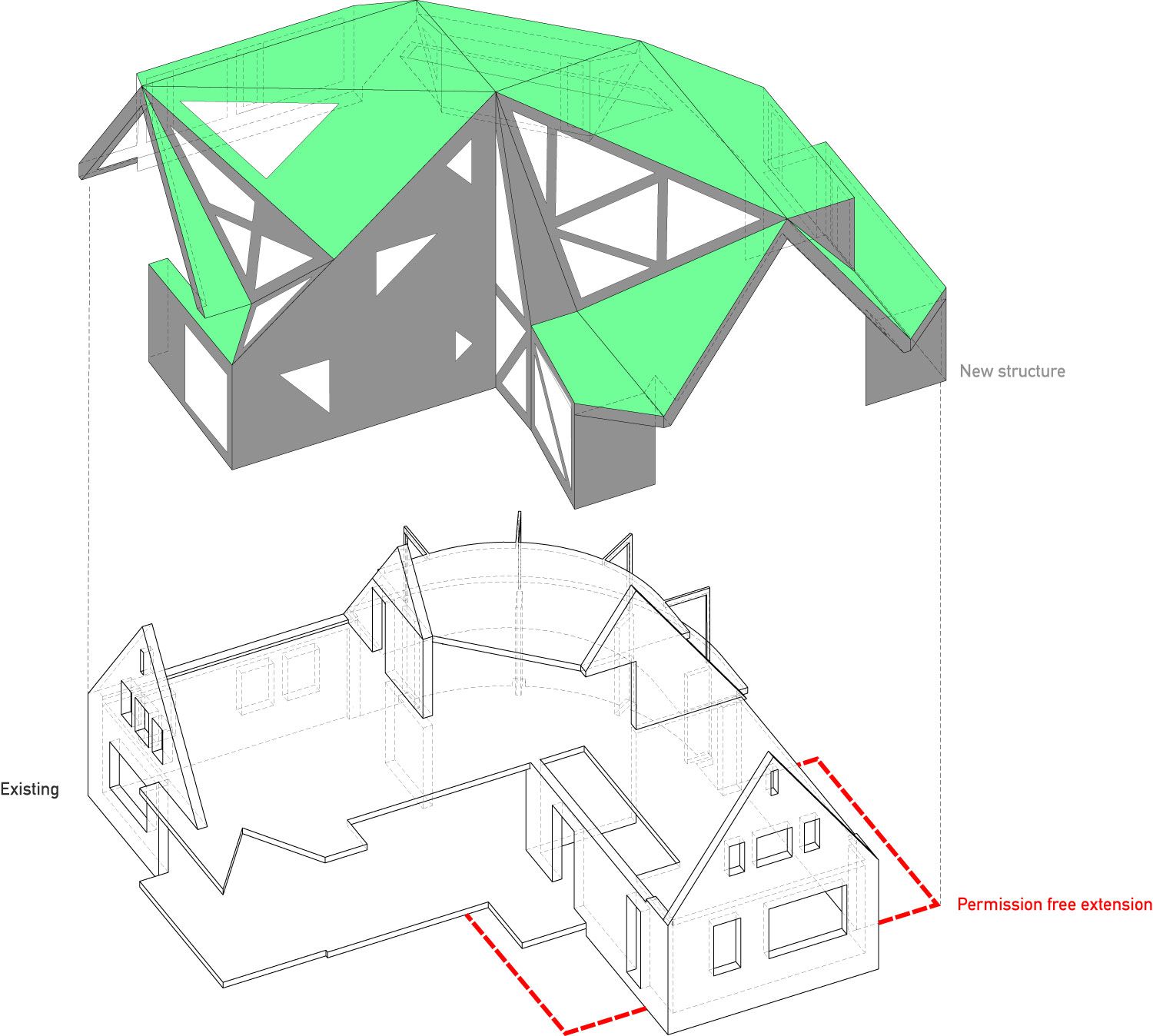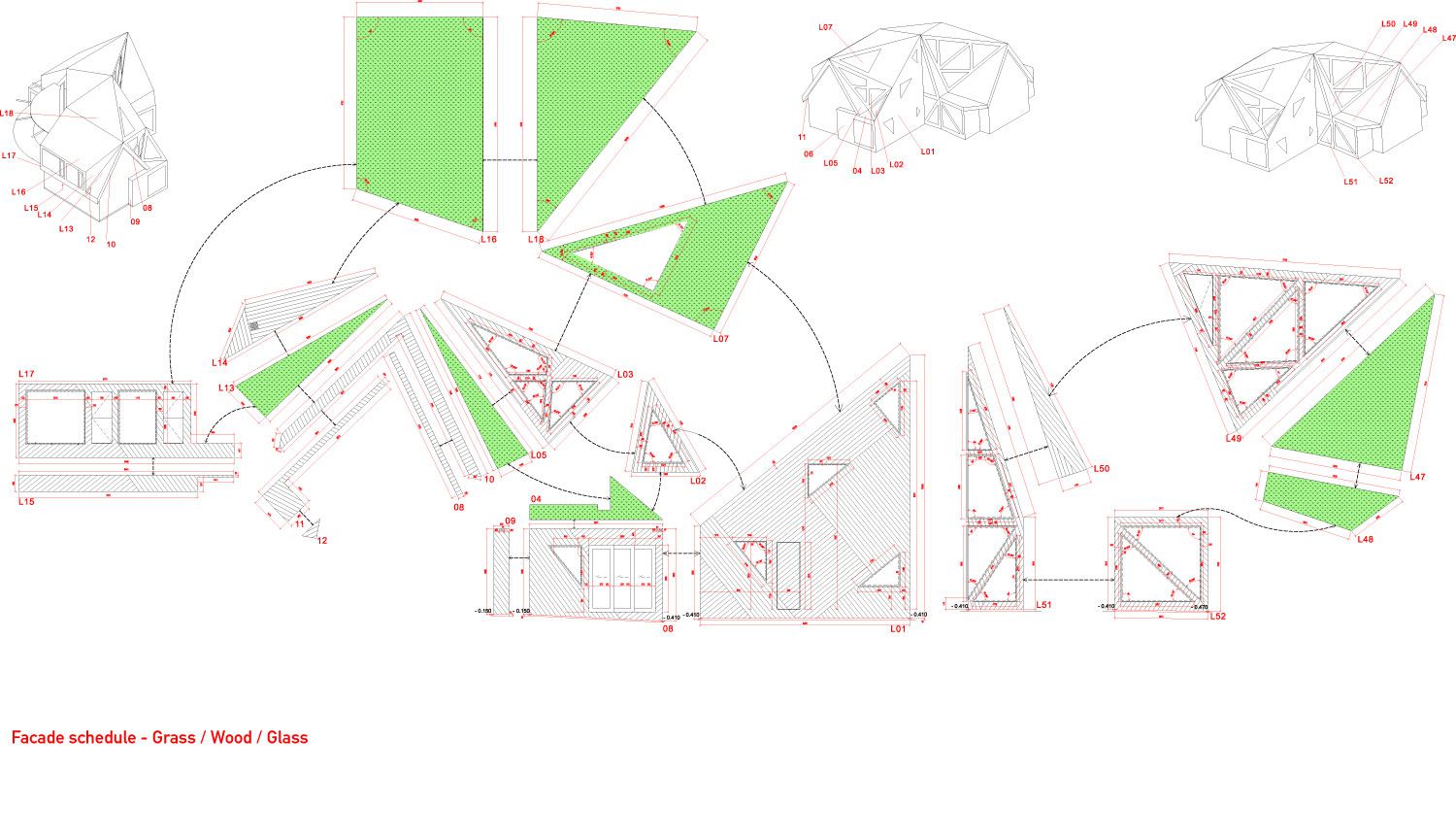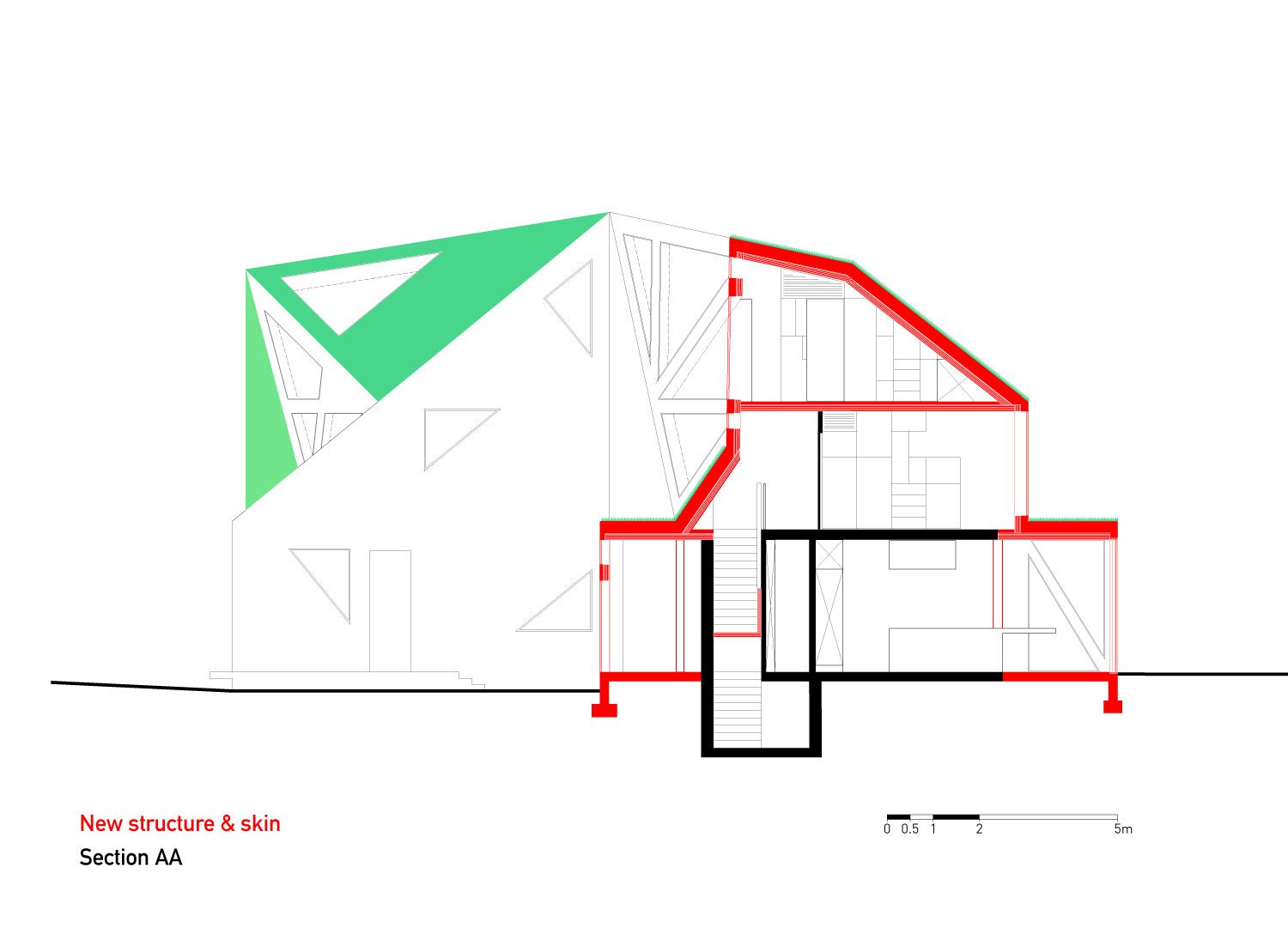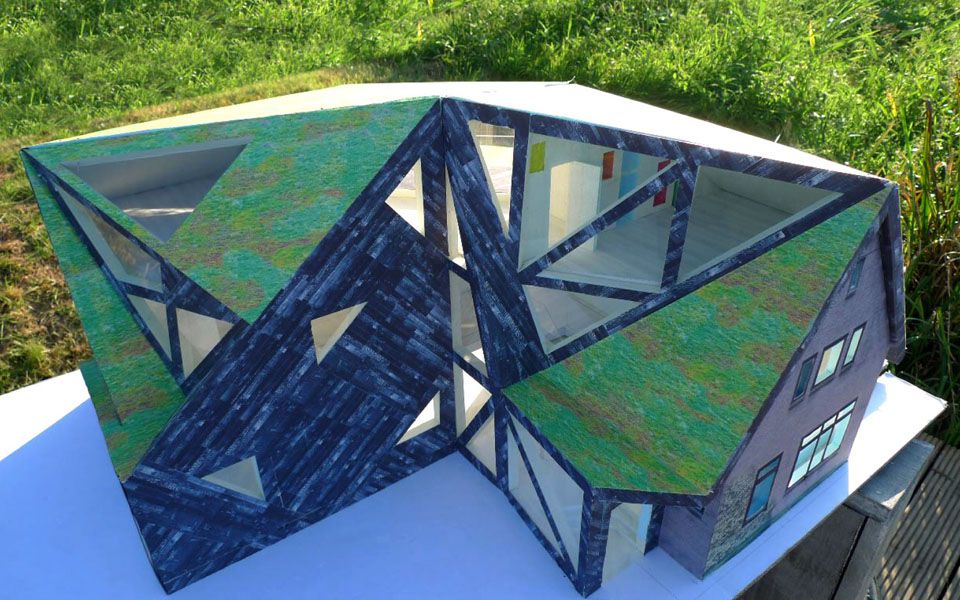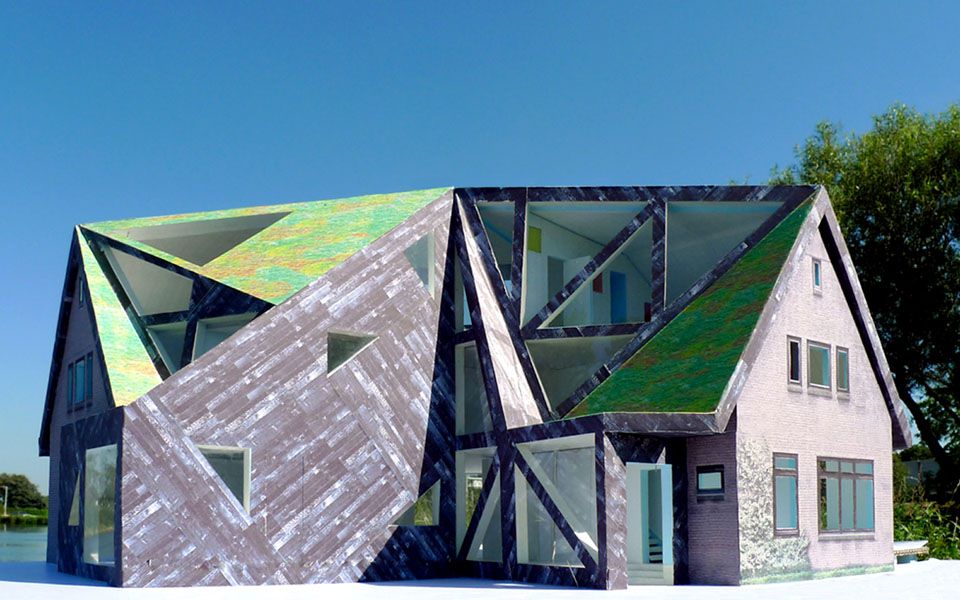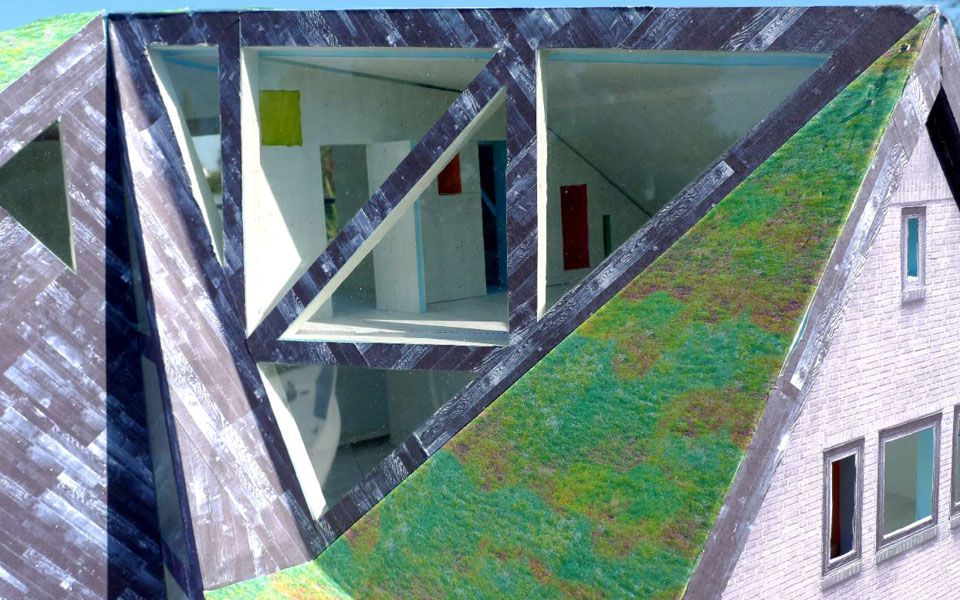Villa Rotterdam 2 by Ooze
Architects: Ooze
Location: Rotterdam, The Netherlands
Area: 4,300 square foot
Photos: Ooze architects
Description:
This segregated Rotterdam house had been expanded a few times in late decades. Overflow planners interpreted the proprietors? longing to reuse the “spirit” of the house by changing it in a bizarre way. The youthful building firm started with a commission to outline a kitchen that then advanced into a complete remodel.
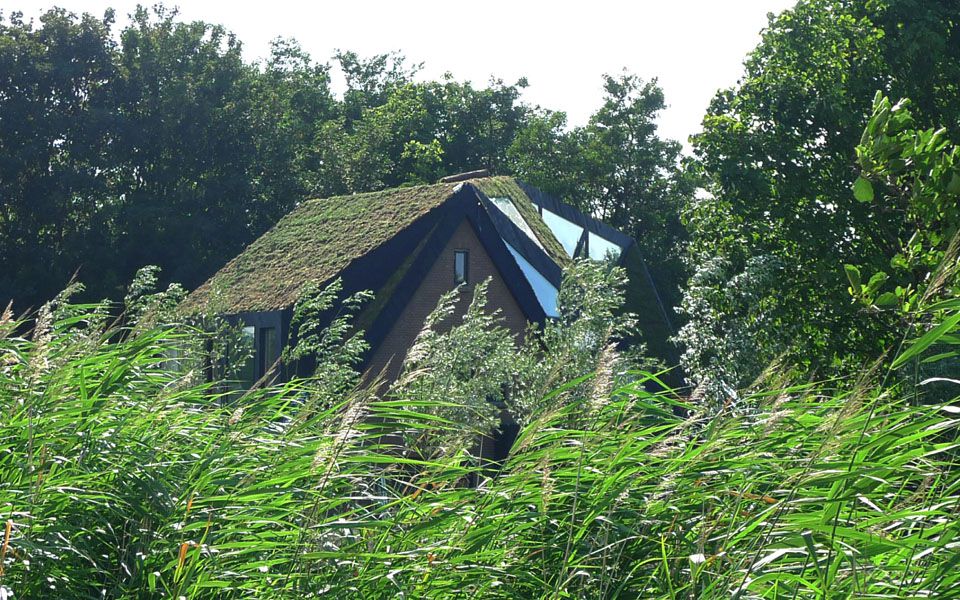
The house on which Ooze started to work had bit by bit become throughout the years. It now comprised of two opposite building volumes with a pitched rooftop, a lower crescent building in the middle of uniting the two sections, and a few augmentations on the other side in the edge of the snare molded house. The proprietors needed to change these indistinguishable parts into an intelligent and thorough entirety. The pre-characterized most extreme envelope framed the rule for another skin that wraps around the old house and shapes new spaces for inhabitation.
The new kitchen and a brief to expand the quantity of rooms were the dispatch for the upgrade of the whole place of which the staircases shape the spine. The design has been completely rearranged around a focal void. Another staircase on the north divider is overhauling first and second floor. Inside, the building shows itself through a formal dialect in light of pre-assembled, strong wood triangles that have an immediate reference to the old rooftop. Folds and aspects were created by an instinctive realism taking after what was allowed and what might advantage the space inside. This skin turns into the structure which sits like a cap on top of the current one and fills in as a heap transporter to cut down the extra weight of the new floors and rooftops. The main development strategy ready to give the exactness and rate of conveyance asked for by the customer was pre-assembled strong timber board (Lenotec) for the structure of the skin (rooftop, dividers and floor).
The pre-assembled, strong wood – LENOTEC – components were cut and touched base as a 3D pack on the building site. This inward structure imparts a feeling of the new and the old: living in another structure and also with the old dividers. The move between the two is inconspicuous and slow – as you go up in the house, the new bit by bit supercedes the old. The spaces produced for inhabitation turn out to be altogether different and particular, improving the life inside in the house.
The material additionally permitted the external dividers and rooftop to remain generally thin. Inside of the given building envelope a most extreme inside space could be figured it out. By differing the thickness of the single material, it could serve as external divider, rooftop, inside divider, stair balustrade and stringer. The outcome is a progression of spaces where the contrast between roof, divider and floor are gone and subsequently cover. The mediation that began the procedure of change remains the most vital. Through the production of a void, the engineers changed the dull and cramped existing stairwell into a brilliant and social space.
The outside references conventional Dutch ranches through the utilization of sedum green rooftops and dark recolored ACCOYA* boards in a standard width of 15cm. The lines of the cladding wrap around the house like a persistent new skin. Past style or engineering stylish, the point was to participate in a procedure of rediscovery of the vernacular, to present a dialog between the old and protected and the new, and to investigate another dialect which reinterprets the old. It is not an item, it is an accumulation of exceptionally agreeable spaces which are entwined with the scene, an amplified envelope which augments the potential outcomes of inhabitation. We are persuaded that recovering the past is a structure a rediscovery of an alternate future, far from the tabula rasa, a more feasible and rousing method for improving the earth we live in.
“The house is a point of reference in building up another society of managing a current structure. “Reusing” is another nature of work; in this way it is not a formalistic but rather an applied house. The new and old meet up, truth be told they are dissolved together. The old does not vanish, it is upgraded, and all states of the first are still there. The new responds to it and blasts the space, and makes an intriguing expression. Everything has its quality and all shapes have a reason. An openness in both sides, designer and customer, was important to make the venture more unique and all the more dazzling. We went together through an inconceivable procedure and the undertaking is the aftereffect of this. Both the reusing of the structure and the procedure can be seen as a noteworthy issue that will make it into a landmark.



